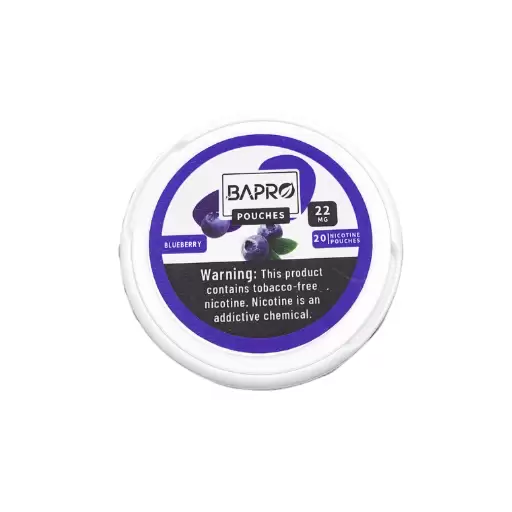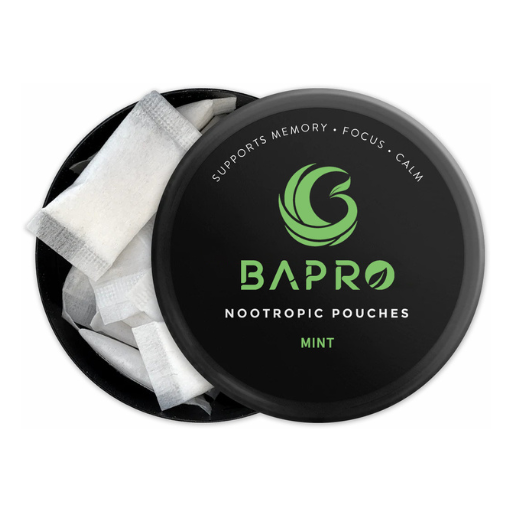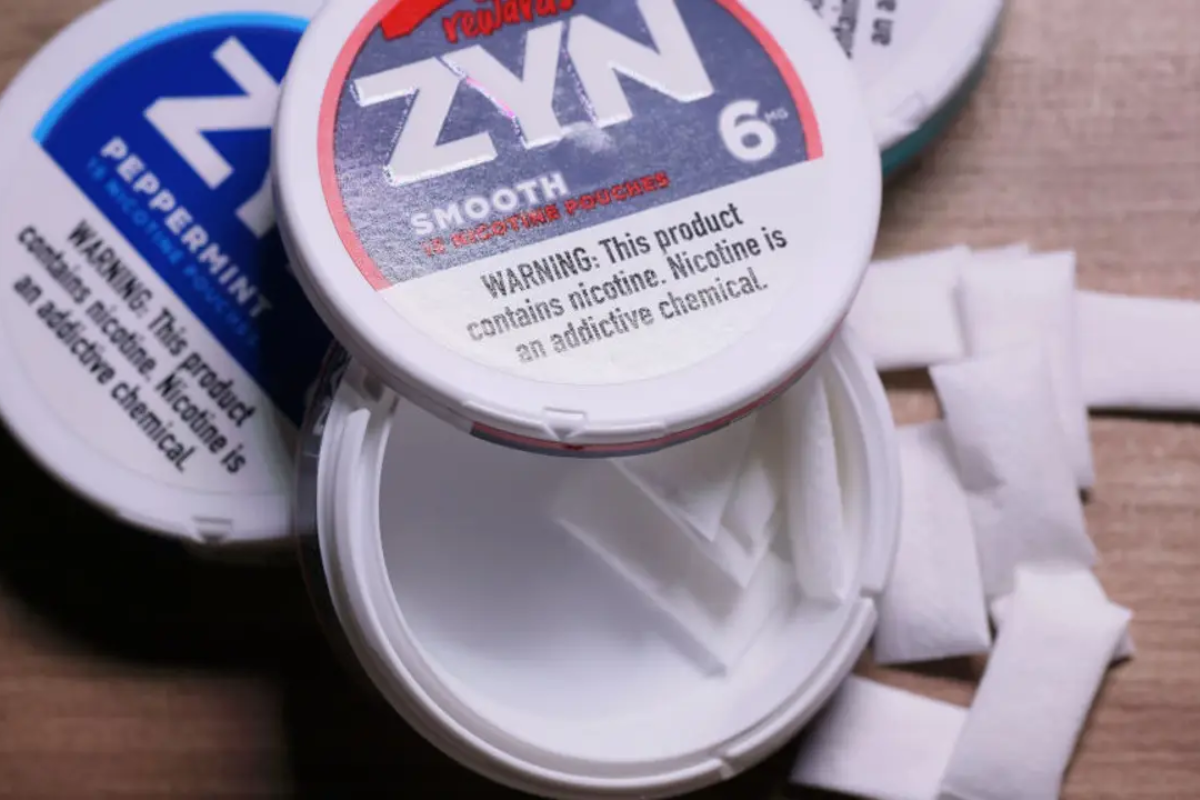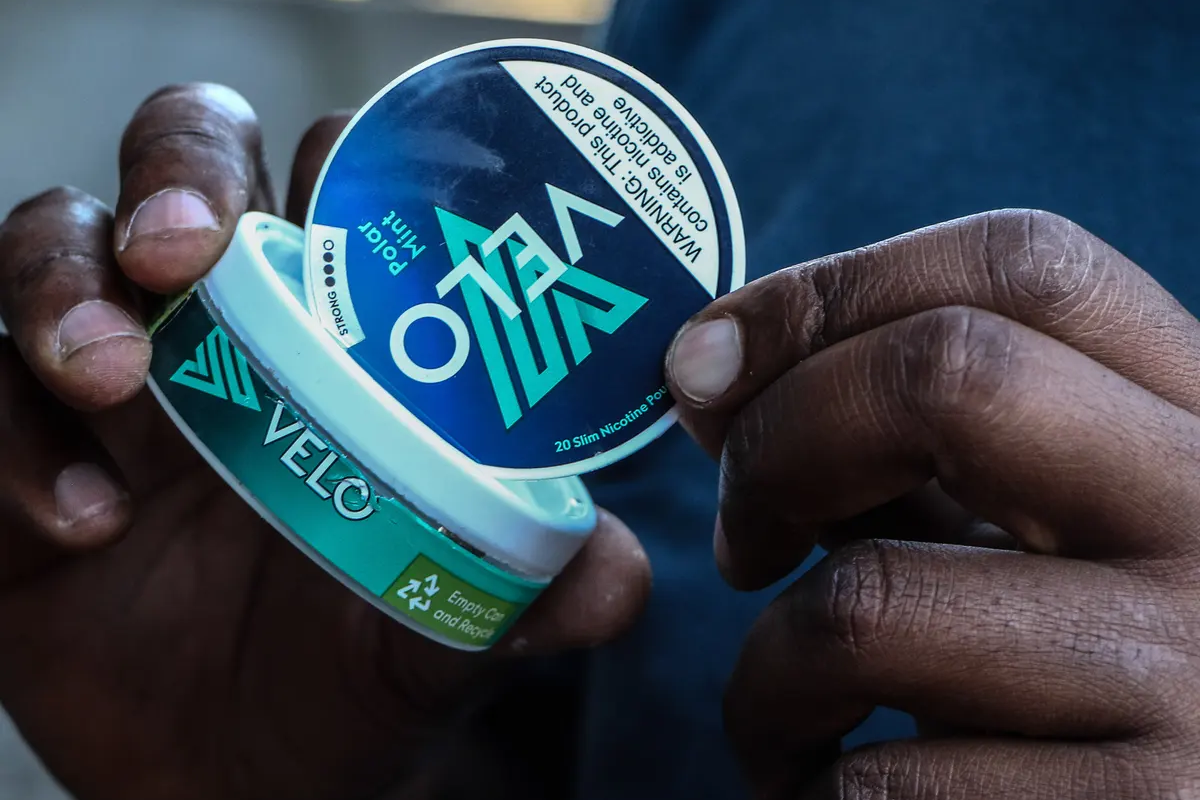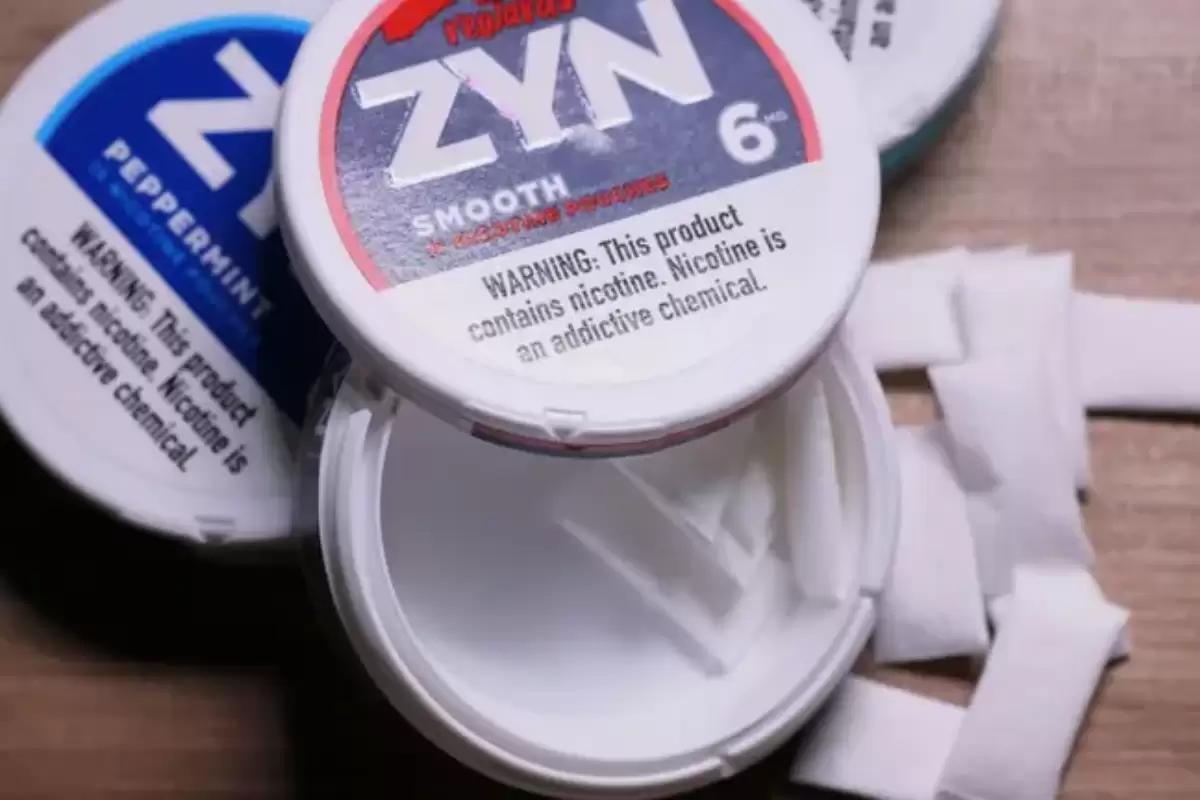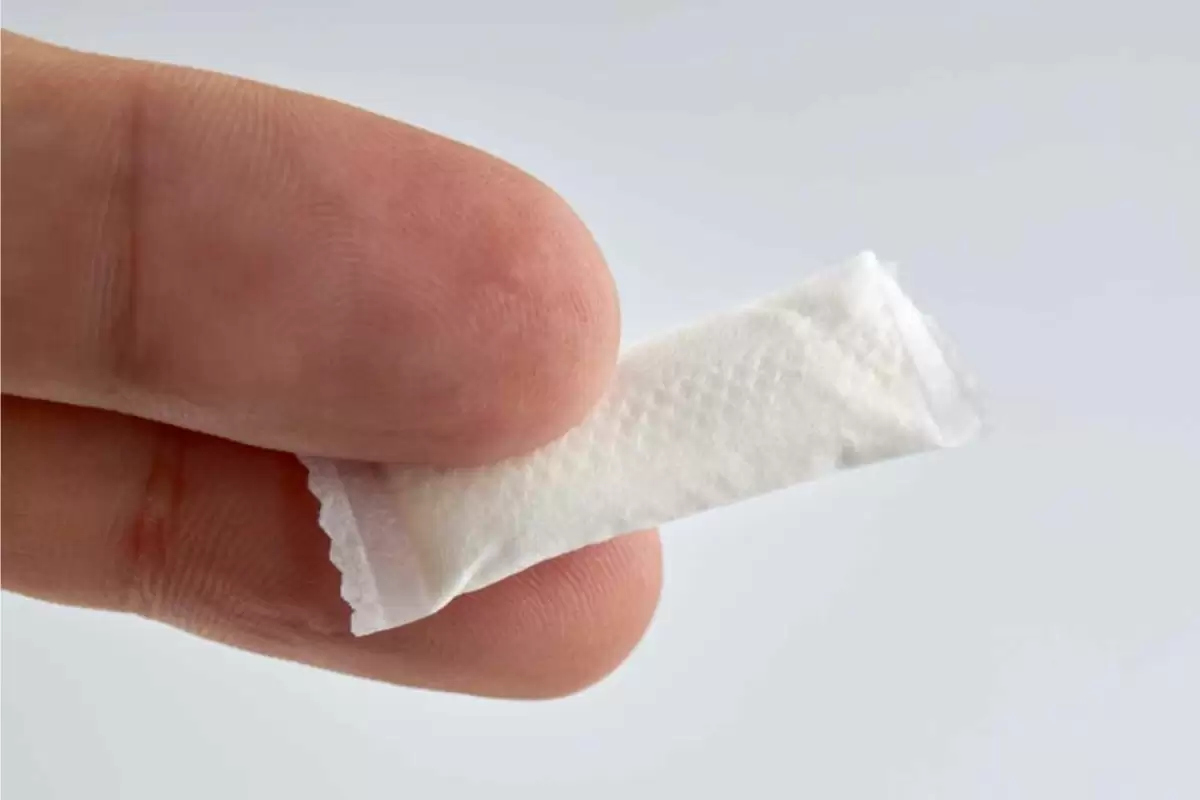Introduction
As consumers have more choices of devices for delivering nicotine, they might want to easily understand why they would want to use one form or the other. This write-up would be able to look critically at vaping devices and ZYN nicotine pouches, two of the most popular forms of nicotine delivery within the modern world. We will be looking at those two systems side by side and try to answer why would someone use one over the other.
Vaping was a true innovation in the nicotine delivery market, since it heated up a liquid containing nicotine to form a vapor that enabled smokeless nicotine consumption. Meanwhile, ZYN was a newer invention: these small, discreet pouches of nicotine delivered in a smokeless form, separate to and without the use of tobacco – an emerging trend in the nicotine market.
And the big question that we hope to answer in 2024, and indeed that lies at the heart of the entire project, is which of these systems gives consumers the best outcomes. Does a particular combustible cigarette yield a considerably different outcome when compared with a particular e-cigarette? Not just outcomes in terms of health but outcomes in terms of the user experience and the regulatory environment that makes those outcomes possible: those are the questions we’re trying to answer directly.
What is Vaping?
Vaping is the practice of inhaling vapor from electronic cigarettes (or e-cigarettes) or similar vape products—which contain nicotine, flavorings, and a host of other chemicals. These devices function by heating a liquid, commonly referred to as e-juice or vape juice, transforming it into an aerosol that users inhale. The adoption of vaping surged in the early 2000s as a smokeless alternative, providing a similar nicotine hit as traditional tobacco products but without the smoke.
The technology and design of vaping devices have evolved significantly, enhancing the efficiency of nicotine delivery and user experience. Modern e-cigarettes vary widely in their design, ranging from sleek, pen-like devices to more complex, modular systems that allow users to customize settings such as temperature and voltage.
The e-liquids used in these devices typically consist of nicotine in various strengths, including nicotine-free options, mixed with a base of propylene glycol and vegetable glycerin, and various flavorings. These flavors can range from classic tobacco and menthol to a wide array of fruity and dessert-like concoctions, making vaping particularly appealing to a broad audience.
While vaping has gained popularity, it has also been the subject of both advocacy and controversy, particularly regarding its safety compared to smoking, its role in smoking cessation, and its appeal to younger demographics who might not otherwise use nicotine products. Despite these debates, vaping remains a prevalent practice globally, often regarded as a revolutionary step in harm reduction for smokers.
Understanding the basics of how vaping works is essential for comparing it to newer nicotine delivery systems like ZYN nicotine pouches, which offer different advantages and potential risks.
What are ZYN Nicotine Pouches?
ZYN Nicotine Pouches are an innovative and tobacco-free option in the increasingly competitive nicotine replacement market developed by the Swedish Match Group. Unlike tobacco, which is traditionally used in cigarettes, ZYN pouches are comprised of a non-tobacco leaf system made with pharmaceutical-grade nicotine, cellulose, and flavorings, as well as sweeteners. This compound of ingredients makes it a discrete, cleaner alternative to conventional tobacco-based products.
What helps ZYN stand apart from other tobacco products is that it’s smokeless and spit-free – meaning that users can discreetly use it virtually anywhere without the hygienic hassles and social stigmas that come with the use of a cigar or a pouch of chewing tobacco. Users simply pop a pouch between their gum and their lip. Inside the pouch, the body’s natural mucous membranes absorb the nicotine. Meanwhile, no tobacco leaves burn, and the consumer never has to spit out tobacco juice left over from chewing tobacco.
With flavors from mint and fruit to coffee and earthy tobaccos, and with varying strengths, ZYN pouches cater to a wide range of tastes and nicotine levels. They are also easily configurable – each pouch contains half the usual dose, meaning that users can divide them, doubling the time it takes for the nicotine to be absorbed, reducing the addictive qualities of the product. The product design itself is clean and modern, appealing to the trend among consumers for perceived healthy and beautiful products.
The growing popularity of ZYN and similar nicotine pouches is integral to the predatory neoliberal backlash against public health legislation. Continuing restrictions on smoking and vaping in public spaces and the broader trend toward reducing tobacco use – known as the global tobacco endgame and gaining global recognition – encouraged the marketing of such products both as less harmful alternatives to smoking and as a means to appeal to both existing tobacco users for whom safer alternatives are desirable, as well as new users who wish to consume nicotine without tobacco products.
ZYN’s rapid rise points to one important trend: that many consumers have come to view smokeless nicotine products as both convenient and less risky to health compared with cigarette tobacco. ZYN nicotine pouches are a product of these broad public health and consumer trends regarding health that we are seeing across the industry: the recreation of nicotine products centered on an individual consumer’s experience, as opposed to a collective social experience. They, like many other nicotine products poised to capture future a share of the market, hinge on these values.
Health Implications
The same fact goes for evaluating the health implications of using ZYN nicotine pouches versus vaping. Nicotine pouches, such as ZYN, and vaping devices are much safer than burning cured tobacco – the primary reason for this being that they don’t call for inhalation of combusted tobacco smoke, which is the underlying cause of smoking-related disease.
ZYN Nicotine Pouches: ZYN Nicotine Pouches are safer than smoking thanks to the fact that they are tobacco-free. Not being made from tobacco means that ZYN Nicotine Pouches do not contain tobacco-specific nitrosamines (TSNAs), some of the most carcinogenic compounds in tobacco. Each Nicotine Pouch also bypasses the combustion process and the subsequent tar, carbon monoxide, and other harmful byproducts created by that process that are found in all forms of tobacco smoking.
Also, the controlled amount of Nicotine in ZYN Nicotine Pouches removes the danger of overdosing by allowing you to control exactly how much of the addictive stimulant you are consuming, which helps reduce the risk of addiction. In conclusion, while Nicotine Pouches do contain Nicotine, which is addictive, and also raises a user’s blood pressure and spikes adrenaline, thereby increasing the heart rate, every medical expert and health body that has looked into the subject has agreed that the risk of cancer and respiratory and heart disease connected with smoking and chewing tobacco is dramatically reduced.
Vaping: Vaping is usually not seen as a worse alternative to smoking because it, too, avoids combustion of the tobacco. But it involves inhalation of vaporized e-liquid, which usually contains nicotine, but also many more chemicals and flavorings (though there are many nicotine-free e-liquids now available as well). While greatly reducing dangers due to tobacco combustion (which excludes most of the carcinogens), inhalation of other chemicals in the vape juice can pose other risks.
Amongst them are propylene glycol and glycerin, as well as chemicals used as flavorings, which may turn into toxic substances such as formaldehyde when heated by high temperatures of vaping devices. Finally, we do not have all the data to know whether vaping is completely harmless, a dangerous habit or just less dangerous than smoking tobacco (some studies indicate that it can cause serious lung problems, although this would be usually due to misuse or to low-quality products), and the health effects of long-term vaping are still unknown.
Approaching this same issue from another direction, comparative analysis of the two products reveals that both ZYN nicotine pouches and vaping result in reduced exposure to many of the carcinogens and toxins present in combustible tobacco products. However, choice of method of nicotine delivery – oral versus inhalation, and the presence of potential irritants in the vape juice – are broader considerations of public health policy .
such as prohibition–based controls on e-cigarettes in various jurisdictions around the world, or various critiques of their use related to those policies – and individual health goals, which may include a desire to quit nicotine completely and also value the potential for ZYN pouches to be used discreetly and without the ritual surrounding serving and smoking or vaping conventional cigarettes, pipes or electronic smoking devices.
In summation, while ZYN pouches and vaping are far superior nicotine-delivery options than cigarettes, neither comes without risk. How many cigarettes a person smokes each day and their overall health issues should be considered when evaluating how their bodies might react to both products. The reader is advised to speak with a healthcare provider before attempting to use either for quitting or reducing harm. The concluding section explores user experiences to illustrate how the two products function in everyday life.
User Experience
In terms of user experience, consumer feedback regarding ZYN nicotine pouches and those related to vaping devices differs: consumers use different factors when making their choices; hence the importance of having a deeper understanding of consumer preferences. This part of the essay will look into consumer feedback, ease of use of both types of nicotine use, how satisfied different users are with these products based on flavor, as well as what kind of customization options are on offer for each of these products.
ZYN pouches are convenient and discreet ZYN Nicotine Pouch: One of the main benefits is the convenience and discreetness of ZYN pouches compared with vaping. Vaping often requires that additional equipment be brought, such as batteries, chargers, devices, and e-liquids. Pouches are small and can easily be taken anywhere or used discreetly without drawing the attention of others, being a good option where smoking or vaping are otherwise not permitted.
ZYN pouches do not produce smoke, vapor, or odor, enabling the user to consume nicotine inconspicuously, even in social or public settings.
Flavor is a major element of the user experience with ZYN pouches. We offer ZYN in a diverse range of flavors, from mint and citrus to coffee or berry. Users repeatedly tell us that they value the consistent delivery of robust flavor for the full duration of the experience – typically up to or beyond 30 minutes. The choice of different strengths available (light, medium, strong) allows users to control the amount of nicotine they take: they can start out at a higher strength if they want to cut down gradually.
Vaping Devices: Vaping devices do pretty well on customizability – many of the more sophisticated setups allow the user to tweak the temperature settings and voltage settings of their device, which can change the potency of the inhale and the amount of nicotine delivered. ZYN pouches do not grant this level of control to users, making them an especially appealing option for lovers of technology or former smokers trying to create a throat hit like that of a conventional cigarette by vaping.
But the user experience depends very much on the quality of the device and e-liquid you use – leaking tanks, battery life limits, and the need to clean and refill can all come into play – and many vapers remain loyal to the format for the huge variety of flavors available and for the ‘lung hit’ that offers instant reward, which is reported to be as satisfying as smoking.
This divide is also reflected in the consumer feedback. Among my generation, those seeking a modern, flavorful way to consume nicotine gravitate towards vaping, while those in search of a hassle-free, discreet way to get a nicotine zap will choose ZYN pouches. Lifestyle is also a factor – while personally I think that all forms of nicotine are addictive, nicotine pouches offer a discreet escape for those who are active or on the go, as well as people who are in smoke-free environments often.
In the end, the choice between use of vape and ZYN nicotine pouches usually hangs on the choice and intended use as loved by the individual. They are undoubtedly great nicotine delivery systems in their own respects that meet the needs and improve the health-conscious of modern consumers. In the third section, the market trends and consumer-preferences about these two products will be further explored to bring more light on the appeal or popularity of these drug-delivery system devices in 2024.
Market Trends and Consumer Preferences
The state of play in nicotine consumption today is a moving target and is changing rapidly with a variety of new technologies, evolving public health policy, and shifts in consumer behavior. Influenced by demographic and cultural changes, the market trends captured by vaping and ZYN nicotine pouches in 2024 reflect broader shifts in society.
Market Share and Growth: Vaping devices, which entered the market much earlier, have had a multibillion-dollar influence that surpasses traditional cigarettes and e-cigarettes, claiming more than half—about six in ten—of the by-nicotine market. Vaping devices are also popular among former smokers and younger adults, as well as those who are more technologically inclined.
Like e-cigarettes, vaping devices also provide a certain amount of individual customization, ensuring that consumers get an immediate nicotine dose anytime, anywhere. However, recent contractions have caused the market of vaping devices to produce a lot of health concerns, and it has had some surges and dives recently in terms of popularity.
By contrast, ZYN nicotine pouches have been demonstrating impressive growth in their market share, especially in areas with very restrictive smoking bans and among those consumers who seek discreet administration of nicotine. The ZYN product’s tobacco-free design encompasses the increasing trend of consumer health consciousness and the growing emphasis by industry and public health agencies on the need for non-combustible systems for nicotine delivery. The onslaught of regulatory restraints on vapes has forced some users to consider so-called ‘safer’ options.
FOOTNOTE: Supported by a recent IPSOS report, the prevalence of consumer nicotine delivery methods has continued to evolve with the following trends: Young adults (especially smokers who have never smoked cigarettes), for whom vaping has a strong tech appeal and social acceptability. Health-conscious males and females of all ages, for whom ZYN pouches offer the convenience and pleasure of nicotine without the smoke, vapor, and stigma of traditional smoking or vaping.
Other cultural and regulatory shifts play a bigger role in dictating niche trends. For instance, in the face of increasingly strict anti-smoking campaigns and public smoking bans, nicotine pouch products tend to gain popularity in areas where secondhand smoke remains a contentious health subject. Pouches are also less obtrusive to non-users than vaping, which can still create a visible amount of vapor and odor.
Cultural and Regulatory Change Impact: Cultural developments can provide a context in which nicotine pouches are seen as a clean alternative to vaping, whereas regulatory frameworks continue to change, with many governments reclassifying vaping due to panics and consequent lobbying of public health groups, leading to the tightening of rules regarding regulation of vaping products (including flavors and advertising).
Their interplay provides a fascinating lens through which to view broader public health, technological, and consumption trends, none of which show themselves as static when we focus on the changing preferences for ways to deliver nicotine.
This snapshot of the market and its trends summarizes the current landscape of nicotine consumption and its anticipated evolution as regulations and technologies play catch-up. In the next section, we review the regulatory impacts that shape vaping and ZYN nicotine pouches’ availability and promotion.
Regulatory Impact
Disparities in the regulatory environment vary across countries. Recent developments in scientific evidence, such as the CDC report on the apparent link between hospitalization due to COVID-19 and vaping, are having a notable impact on the predicate. Ultimately, issues of regulatory oversight and different approaches from the European Union (EU), US, and other jurisdictions—especially regarding e-cigarettes—are determining which products can be marketed and how they are perceived by consumers.
Global regulatory context: EU nations have imposed strict regulations on vaping: limits on the level of nicotine strength as well as prohibitions on certain flavors, and tight restrictions on marketing, for example. The aim of this is to make it less likely that vaping products will be appealing to children and to non-smokers (as well as to make it safe, and to inform consumers of this fact). Since ZYN nicotine pouches are tobacco-free, they are permitted somewhat less tight regulation than vaping parts of the EU directive insists on reducing ‘use of tobacco’.
Here in the US, the regulatory environment is similar in its stringency for vaping products. As a tobacco product, the Food and Drug Administration (FDA) regulates e-cigarettes and nicotine pouches. With respect to them, the FDA matters because it is required to approve them before they can be marketed. This pre-market approval requires a public health assessment.
There has been fierce regulatory scrutiny of vaping products here, in particular over flavor bans that curtail youth vaping. Although it is also regulated, nicotine pouches often find their way around these rules more easily given both their non-combustion nature and their common perception – one that is often manipulated by industry – that they’re less risky to third parties.
Effect on Visibility and Promotion: The extent to which companies and content creators can promote vaping products and nicotine pouches depends starkly on the regulatory climate. For example, in areas with stringent anti-advertising restrictions, such as the EU and certain parts of the US, marketing needs to be overtly careful not to target youth or to promote the acts of dipping or vaping as harmless.
Whether these products can be seen in bricks and mortar stores or on online marketplaces is affected by regulation which limits or bans certain targeting measures, possibly diminishing consumers’ knowledge.
Potential future regulatory changes: In the future, both nicotine delivery sectors could face more regulatory control as governments look to reduce nicotine consumption overall and reduce opportunities for underage use. This could include more restrictive controls on nicotine content, further bans on flavors or more restrictions on the sale of products. Companies in the nicotine delivery space must understand the local and international regulations and how they could adapt to future regulatory changes.
To stay on top of a shifting regulatory landscape, manufacturers and retailers should consistently pay attention to compliance and continue to influence product innovation and market strategy. Current regulations will likely lead to changes in how companies address the nicotine delivery market for current and future products, but those changes might not always be transparent.
Understanding these regulatory contexts is important for consumers who wish to make informed choices about these products, and for businesses looking to enter or expand within the market. The relationship between evolution of regulation and market responses will reshape the ways in which nicotine enters the body and impacts human health well into the future.
Common Questions About Nicotine Pouches
- What are nicotine pouches? Nicotine pouches are small, tobacco-free sachets that contain nicotine and other ingredients such as flavourings and sweeteners, designed to be placed between the lip and gum where the nicotine is absorbed via the oral mucosa.
- How do you use the nicotine pouches? Put one between the lip and the gum of your mouth. You absorb the nicotine through the lining of your mouth. You can leave it there between five and 60 minutes, or as long as you like – some people leave it in their mouth all night.
- Are nicotine pouches and snus harmful? Nicotine pouches are probably safer than smoking tobacco, since they don’t involve combustion, which means you don’t inhale tar and carbon monoxide. But they contain nicotine, which is an addictive chemical and can increase heart rate and blood pressure.
- Do nicotine pouches help you quit smoking? As a harm-reduction device, nicotine pouches can be used by smokers as part of a quit plan for smokers, where the motivation is to replace smoking tobacco with other products that deliver nicotine. An ideal quit plan would incorporate a multi-pronged strategy such as nicotine replacement as part of a behavioural support framework.
- Side-effects when using nicotine pouches? The most common side effects from using nicotine pouches include mild to moderate gum irritation, mouth soreness when chewing, occasional hiccups and nausea. These side effects are generally mild and many people experience better tolerance when the product is used on a regular basis and their bodies get accustomed to the amount of nicotine they are receiving.
- Do nicotine pouches contain tobacco? No, nicotine pouches do not contain tobacco leaf. It’s just the part of the plant is extracted that has the nicotine, and that’s then added to the mix of other ingredients such as cellulose, flavourings and sweeteners.
- How long do you leave it in your mouth? You can vary as long as you keep it within 20 min to an hour, however it is purely your personal preference. It depends on how nicotine intake.
- Are there different strengths of nicotine pouches? Yes, most brands offer pouches of different strengths, somewhere between 2 mg and 8 mg of nicotine per pouch. This way you can find a strength that can be a good match for your previous smoking or vaping habits, and can be used to taper down your nicotine intake.
Here are five scholarly articles on nicotine pouches that include various analyses and findings about their use, safety, and public health implications:
- “Harmful and Potentially Harmful Constituents (HPHCs) in Two Novel Nicotine Pouch Products“ – This study compares the harmful and potentially harmful constituents found in ZYN products to those in regular smokeless tobacco products and nicotine replacement therapy products. It provides valuable insights into the chemical characteristics of ZYN nicotine pouches.
- “Nicotine Pouch: Awareness, Beliefs, Use, and Susceptibility among Current Tobacco Users in the United States, 2021“ – This research explores the awareness, beliefs, use, and susceptibility to nicotine pouches among current tobacco users in the U.S., offering a snapshot of consumer attitudes towards these products in 2021.
- “Awareness, Susceptibility, and Use of Oral Nicotine Pouches and Comparative Risk Perceptions with Smokeless Tobacco among Young Adults in the United States“ – This study surveys U.S. young adults on their perceptions of nicotine pouches compared to smokeless tobacco, assessing their susceptibility and actual use of these products.
- “Estimating the Public Health Impact had Tobacco-Free Nicotine Pouches Been Introduced into the US in 2000“ – This research estimates the potential public health impact if nicotine pouches had been available from 2000, analyzing historical health data and projected outcomes.
- “Comparative Toxicity and Nicotine Delivery in ZYN vs. Smokeless Tobacco Products“ – This article analyzes and compares the toxicity and nicotine delivery levels of ZYN products with traditional smokeless tobacco, providing a scientific basis for understanding the relative risks and benefits. Findings from this research are essential for both users and policymakers and are discussed in-depth in the journal Nicotine and Tobacco Research.

